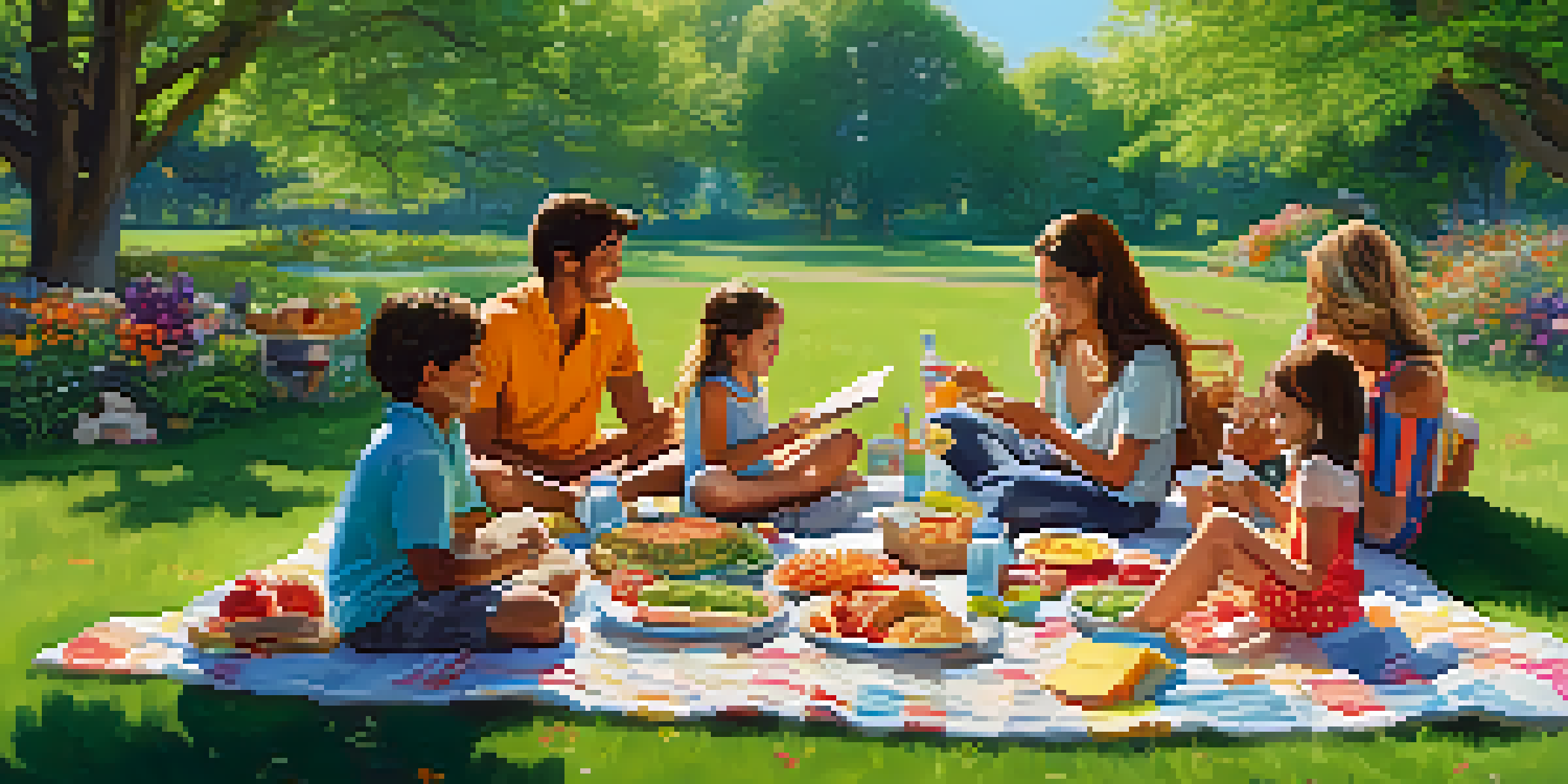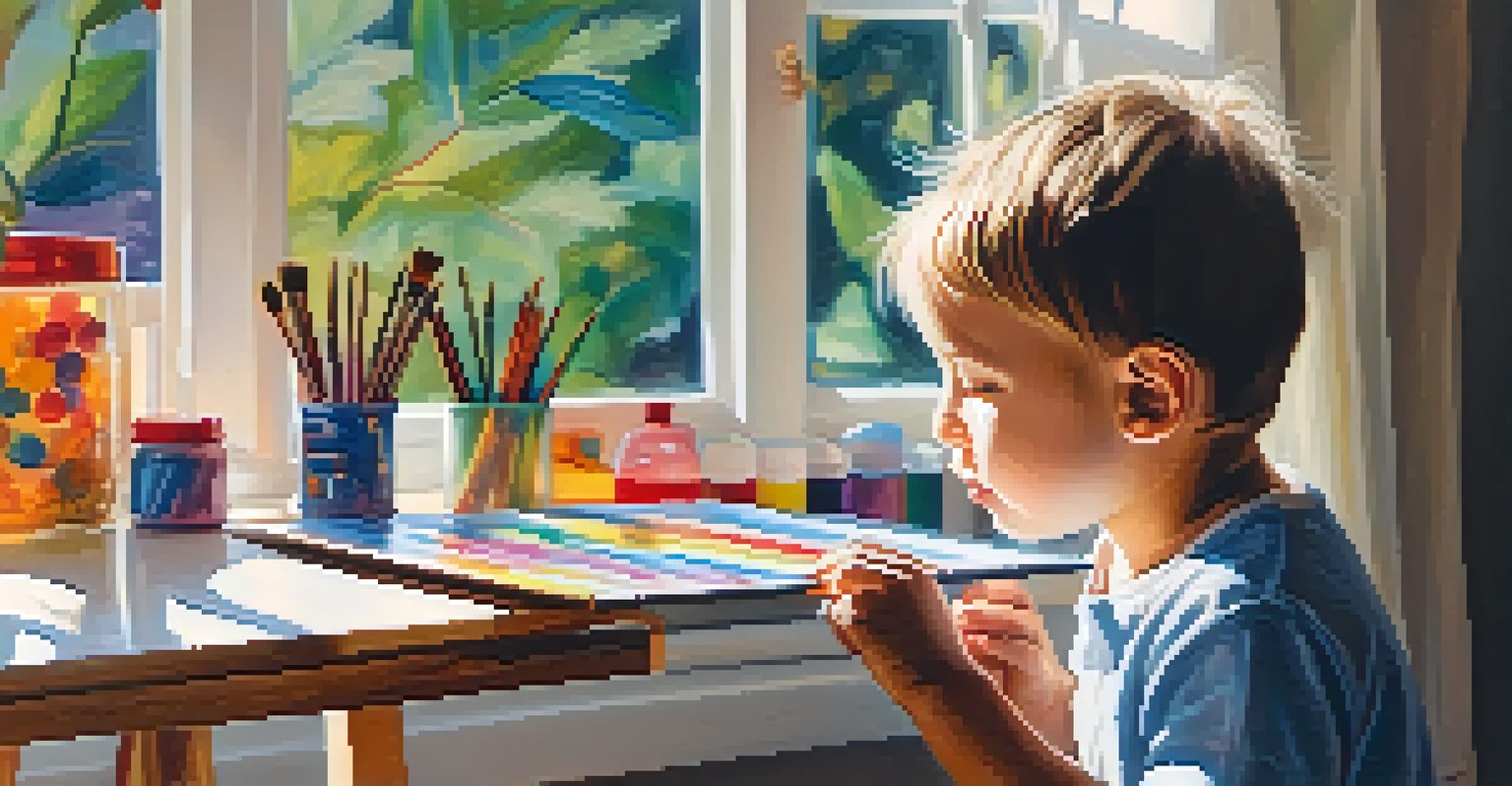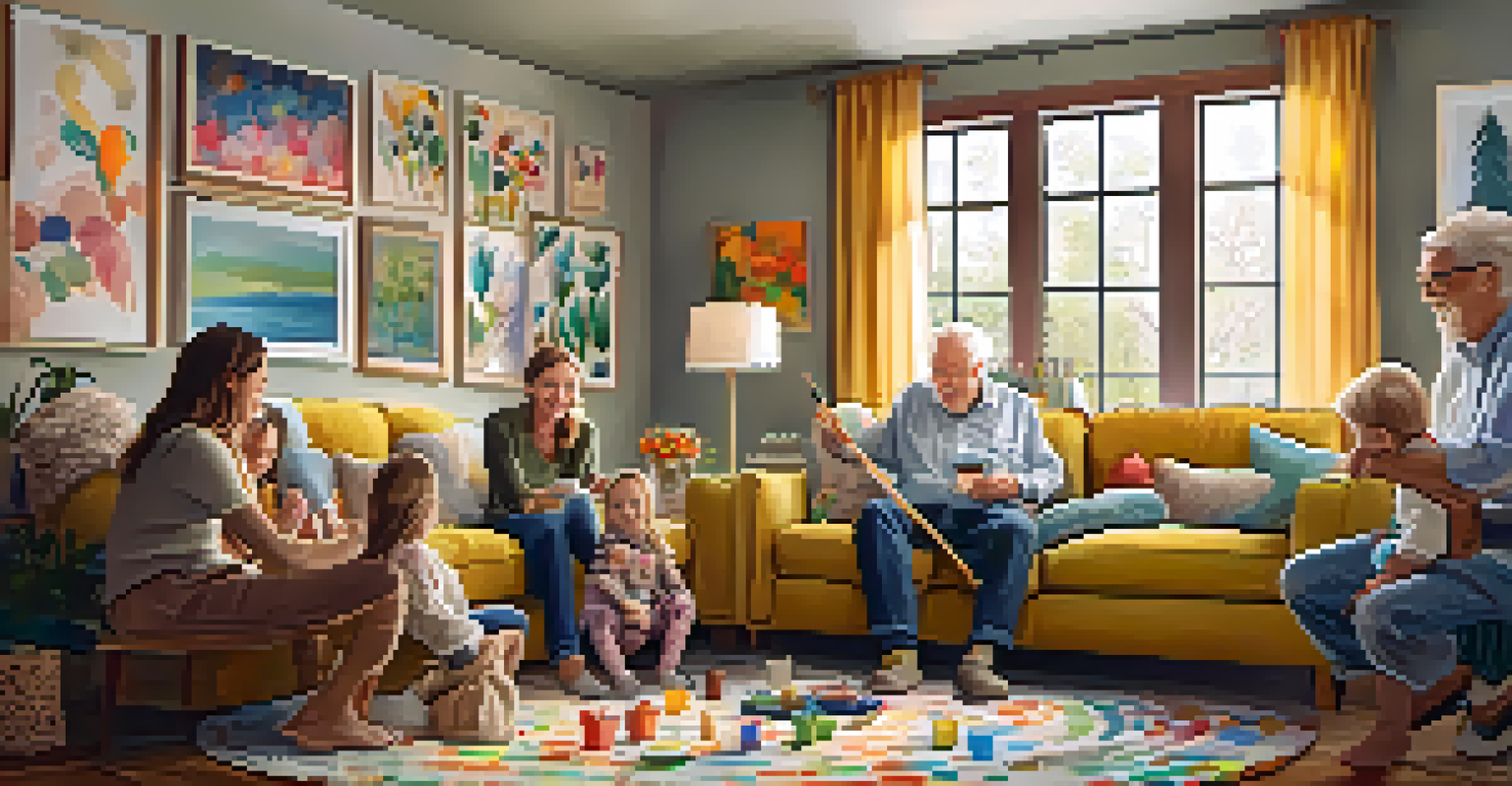Children's Art: A Reflection of Family Perspectives

Understanding Children's Art as a Family Reflection
Children's art is more than just colors and shapes; it often reflects the family dynamics and values at play. When a child picks up a crayon or paintbrush, they draw from their surroundings and experiences, translating emotions and relationships into visual form. For instance, a drawing of a family picnic might reveal a child's perception of joy and togetherness, highlighting how they view their family interactions.
Every child is an artist. The problem is how to remain an artist once we grow up.
Family perspectives are intricately woven into the art children create, showcasing their thoughts on familial roles and relationships. A child who frequently sees their parents working may depict them in suits and ties, illustrating their understanding of adult responsibilities. This kind of artwork offers a unique lens through which we can gauge how children interpret their world and the messages they receive from their families.
Furthermore, children's art can serve as a conversation starter about family values and beliefs. When parents engage with their child's artwork, they open avenues for discussion about what those images mean. This dialogue not only nurtures creativity but also reinforces the importance of family connections and shared experiences.
The Emotional Landscape of Children's Creativity
Artistic expression allows children to process their feelings and experiences, often reflecting the emotional landscape of their families. When children create art, they may express feelings of happiness, sadness, or confusion, providing insights into their emotional well-being. For instance, a child who feels neglected may create darker artwork, signaling a need for attention and understanding.

Moreover, this emotional expression is often influenced by the family environment. A supportive and nurturing home may lead to brighter, more optimistic creations, while a turbulent household might result in more chaotic or somber pieces. Observing these patterns can help parents better understand their child's emotional state and the influences at play.
Children's Art Reflects Family Values
Children's artwork often mirrors their family's dynamics and values, providing insights into their perceptions and relationships.
Encouraging children to share the stories behind their art can foster deeper emotional connections within the family. By discussing what their creations mean to them, children learn to articulate their feelings, while parents gain insights into their child's inner world. This exchange can strengthen family bonds and promote emotional intelligence.
Art as a Reflection of Cultural Values
Children's art is also a canvas for cultural expression, showcasing the values and traditions families hold dear. For instance, a child might draw traditional clothing from their family's heritage, illustrating pride in their cultural background. Such artwork not only preserves cultural narratives but also allows children to explore and express their identity.
Art enables us to find ourselves and lose ourselves at the same time.
As families engage in cultural practices, children often reflect these experiences in their art. Celebrating holidays, festivals, and family rituals can inspire children to depict these moments through drawing or painting. This artistic representation serves as a way for children to connect with their heritage while also sharing it with others.
By nurturing a child's artistic expression related to cultural values, families can foster a sense of belonging and pride. Parents can encourage their children to create art that reflects their cultural stories, helping them understand their roots and the importance of their family's traditions. This connection to culture can significantly shape a child's identity.
The Role of Family Support in Artistic Development
Family support plays a crucial role in a child's artistic journey. When parents encourage their children to explore different mediums and styles, they foster creativity and self-expression. For example, setting up an art corner at home can provide children with the resources they need to experiment and develop their skills.
Moreover, positive reinforcement from family members can boost a child's confidence in their artistic abilities. Complimenting their work and showing interest in their creations can motivate them to continue exploring their artistic talents. This encouragement not only enhances their skills but also reinforces the idea that their creativity is valued.
Art Expresses Children's Emotions
Through artistic expression, children can process and communicate their feelings, highlighting their emotional landscape within the family.
Additionally, family involvement in artistic activities can strengthen relationships. Whether it's painting together or visiting an art gallery, these shared experiences create lasting memories and encourage collaboration. Such moments not only enrich the child's artistic development but also deepen family bonds.
Navigating Challenges Through Art
Children often face various challenges as they grow, and art can be a powerful tool for navigating these difficulties. Whether it's coping with a new sibling, moving to a new home, or dealing with school stress, art provides a safe outlet for expression. For instance, a child might draw a picture of their new home, helping them process the transition and express their feelings about it.
Families can utilize art as a way to address and discuss challenges openly. Encouraging children to create pieces that reflect their struggles can lead to meaningful conversations about their experiences. This approach not only validates their feelings but also promotes problem-solving and resilience.
Moreover, art therapy techniques can be beneficial for children dealing with emotional or behavioral challenges. Engaging in creative activities with a professional can help children articulate their feelings in a non-verbal way. This therapeutic aspect of art can significantly enhance emotional well-being and strengthen family support systems.
Art as a Bridge Between Generations
Children's art can serve as a remarkable bridge between generations, connecting family members through creativity. When grandparents, parents, and children collaborate on art projects, they create shared experiences that transcend age barriers. For example, creating a family mural can encourage storytelling and bonding as each generation contributes their unique perspectives.
These collaborative art sessions can also foster a sense of legacy, as older generations share their artistic skills and experiences. Children can learn traditional techniques or family stories that are expressed through art, enriching their understanding of family history. This exchange not only preserves traditions but also empowers children to express their identities.
Family Support Boosts Artistic Growth
Encouragement and involvement from family members play a vital role in nurturing a child's creativity and artistic development.
Additionally, showcasing children's art within the family can strengthen intergenerational relationships. Displaying their artwork in communal spaces allows family members to appreciate and celebrate each other's creativity. This recognition reinforces the importance of artistic expression and the connections that art can create between family members.
Encouraging Lifelong Artistic Expression
Fostering a love for art in childhood can lead to a lifelong passion for creativity. When families prioritize artistic expression, they instill a sense of appreciation for the arts that can last into adulthood. Encouraging children to explore various art forms—whether it's painting, sculpting, or digital art—opens up a world of possibilities for creative expression.
Moreover, families can create an environment that values creativity by incorporating art into everyday life. This might include visiting museums, attending art classes, or simply engaging in art projects at home. Such experiences can inspire children to pursue their artistic interests and develop their skills over time.

Ultimately, supporting children's artistic journeys not only enriches their lives but can also transform family dynamics. As children grow into adults who value creativity, they carry these lessons into their own families, continuing the cycle of artistic expression and appreciation. This legacy of creativity can strengthen family bonds and enrich future generations.